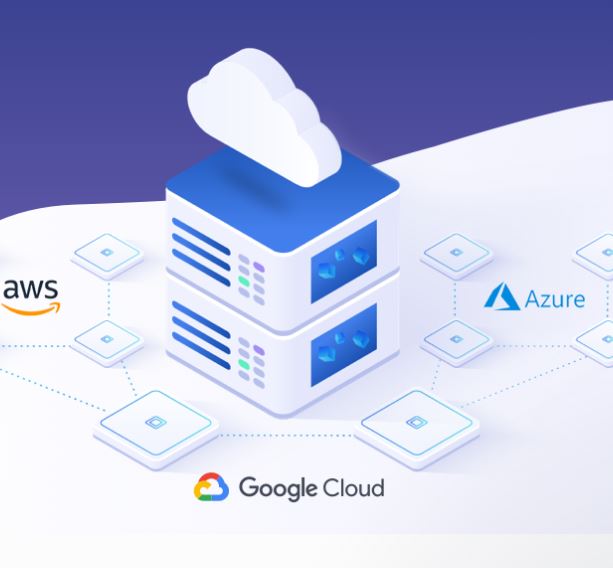NetApp has acquired workspace-as-a-service vendor CloudJumper in a bid to exploit growing demand for cloud-based virtual desktops generally and Microsoft’s Windows Virtual Desktop (WVD) offering specifically.
Terms of the transaction were not disclosed.
The deal positions NetApp to combine online virtual desktop infrastructure (VDI) services from Microsoft, Amazon Web Services, and Google with its own Azure NetApp Files and NetApp Cloud Volumes storage platforms, its SaaS Backup system for Office 365 and Salesforce, and the software-defined storage technologies it acquired along with Talon Storage last month, to deliver complete “modern workplace” solutions.
“We saw an opportunity to leapfrog legacy vendors with a SaaS-based, public cloud-based platform that would complement our shared storage, Azure NetApp Files in particular, and would bring together our capabilities that currently serve in that modern workplace market,” says Anthony Lye, senior vice president and general manager of NetApp’s Cloud Data Services business unit. “We’re seeing a very significant shift from legacy VDI to Microsoft WVD, and we want to take a share of that.”
The recent, dramatic spike in demand for cloud solutions of all kinds triggered by the coronavirus pandemic and its associated stay-at-home orders have only accelerated the trend toward virtual desktops, he continues. “It was just too good an opportunity for us not to insert ourselves.”
In conjunction with today’s announcement, NetApp has changed the name of CloudJumper’s Cloud Workspace Management Suite to NetApp Virtual Desktop Service (VDS). Functionally, however, the product remains largely the same for the moment.
“There’s no change to the existing infrastructure at all,” Lye says. “There are just extra things that CloudJumper customers can deploy.”
Those include an addition to the company’s Cloud Insights dashboard solution introduced today that offers real-time performance monitoring analytics and chargeback data for NetApp VDS. Full-scale integration with Azure NetApp Files and NetApp Cloud Volumes will arrive within 90 days as well.
CloudJumper’s already robust support for Azure NetApp Files was part of what made it an attractive addition to NetApp’s modern workplace strategy, Lye notes, as were the two companies’ closely aligned product roadmaps and strategic visions. The strength of CloudJumper’s cloud-native platform, however, was the most important factor.
“We loved their architecture,” Lye says. “They didn’t have a legacy on-prem software platform to migrate. They had built their product from the ground up to be software as a service.”
That CloudJumper has a managed VDI service in addition to its VDI software was another appealing consideration, Lye adds. That offering has now been renamed NetApp Virtual Desktop Managed Service.
CloudJumper’s senior leadership team will remain onboard with NetApp going forward. JD Helms, formerly president of CloudJumper, will now serve as vice president of modern workplace for his new employer, with responsibility not only for NetApp VDS but for the vendor’s Office 365 data protection solution and global file cache system for remote office and branch offices.
CloudJumper’s partners, meanwhile, have all been enrolled in NetApp’s Cloud First partner program. “They retain the existing business terms and conditions they have with CloudJumper, and now they get extra stuff to sell,” Lye says. “Conversely, the NetApp channel that had signed up to be Cloud First now automatically gets access to the virtual desktop service as another piece of value-add that they can now take to market. So it’s a win-win.”
CloudJumper resellers in particular, according to Lye, can expect to earn higher margins in the future thanks to the greater breadth of NetApp’s modern workplace solution relative to CloudJumper’s platform alone.
“If they were selling CloudJumper and a VDI stack, they were getting like 20 cents of the total dollar,” he says. “Now with NetApp, they get access to all of our extra stuff, so that 20 cents on the VDI dollar now goes up to like 50 cents on the VDI dollar.”
NetApp, which according to Lye does some 80% of its business through the channel at present, sees virtual desktops as an especially rich opportunity for its SMB partners.
“We think there’s a ton of virtual desktops going into the small business. We think there’s a ton of virtual desktops going into the medium-sized business, as well as the massive enterprise deals,” Lye says. “We as an organization will continue to put channels front and center in our strategy.”
Interoperability with Azure NetApp Files and NetApp Cloud Volumes is the first step in a more ambitious series of NetApp VDS enhancements to come. “We have a very, very aggressive integration plan to push products together to give our customers a holistic bundle that they can purchase from a single company, obviously through the channel, to enable themselves to run enterprise-grade, optimized VDI solutions with a bias towards WVD,” Lye says.
NetApp has incremental job listings open now across development, sales, and support to propel that effort. “We have grand plans to build out a lot more functionality using our balance sheet,” Lye says. “You’re going to see a lot of investment to help people deploy, manage, and monitor VDI.”
Other channel-focused vendors with an interest in the Microsoft Azure and WVD markets include Nerdio, which is currently applying a recently-raised $8 million round of venture capital to accelerate its roadmap, expand into overseas markets, and sign more partnerships with third-party providers of Azure software and services.














